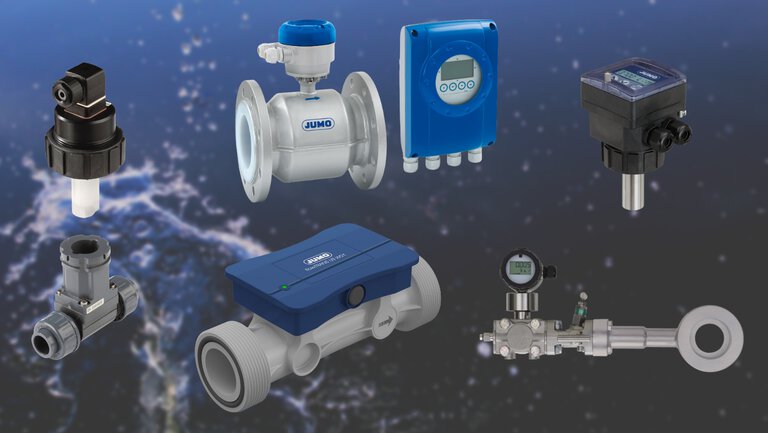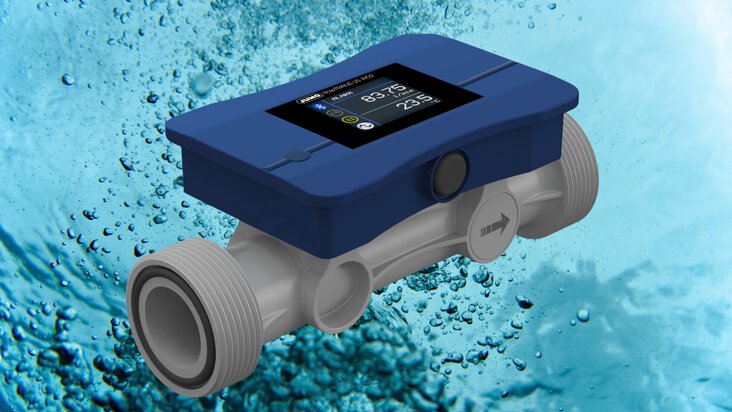
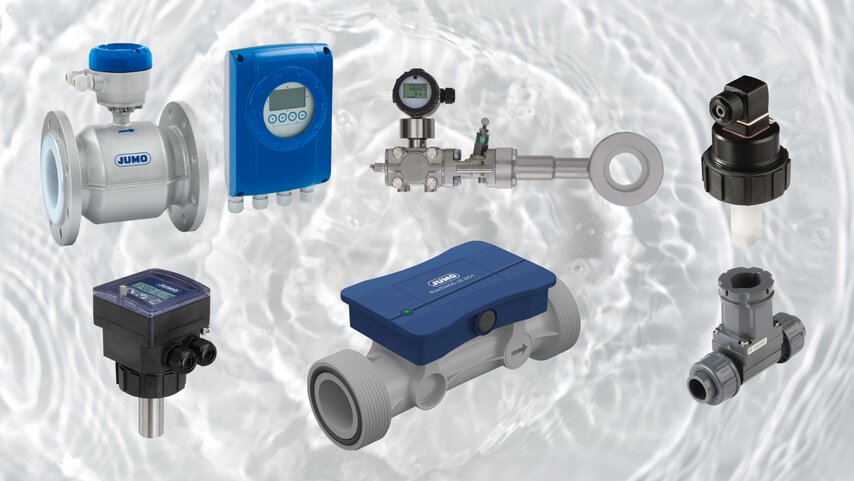
How do I choose the right flow meter for my application? Download the checklist!
Each flow measurement technology and type of flow meter has advantages and disadvantages that, depending on the application, will either help you solve a problem or be the cause of inaccurate measurements. How not to get lost in the variety of flowmeters when choosing a device for your application? What factors should you consider before making a purchase? We answer these questions in the following post, check it out!
How do flow measurement sensors work?
Flow meters are devices that are used to measure the amount of a medium, such as liquid or gas, flowing through a cross-section of a pipeline by determining its flow rate/speed.
Given the number of types of flow meters available on the market, choosing the right measuring device for a specific industrial application is not a simple task.

Precise flow measurement determines the correct functioning of many industrial processes
Types of liquid and gas flow meters
There are two basic types of flow measurement - mass and volumetric.
Volumetric flowmeters
In the volumetric method
volumetric, the volume of liquid per unit time is measured, as the name suggests, against which the rate is calculated. The standard units for volumetric flow are metres3 /second, millilitres/second. These flowmeters will not be suitable for fluids with varying densities. Volumetric flowmeters include.
- electromagnetic flowmeters
- ultrasonic flowmeters
- turbine flowmeters
Mass flowmeters
Mass flowmeters are devices that measure the mass of a medium flowing through a pipeline in a specific unit of time. The standard unit is, for example, kilograms per second. In this category, we distinguish between, among others:
- calorimetric flowmeters
- coriolis flowmeters
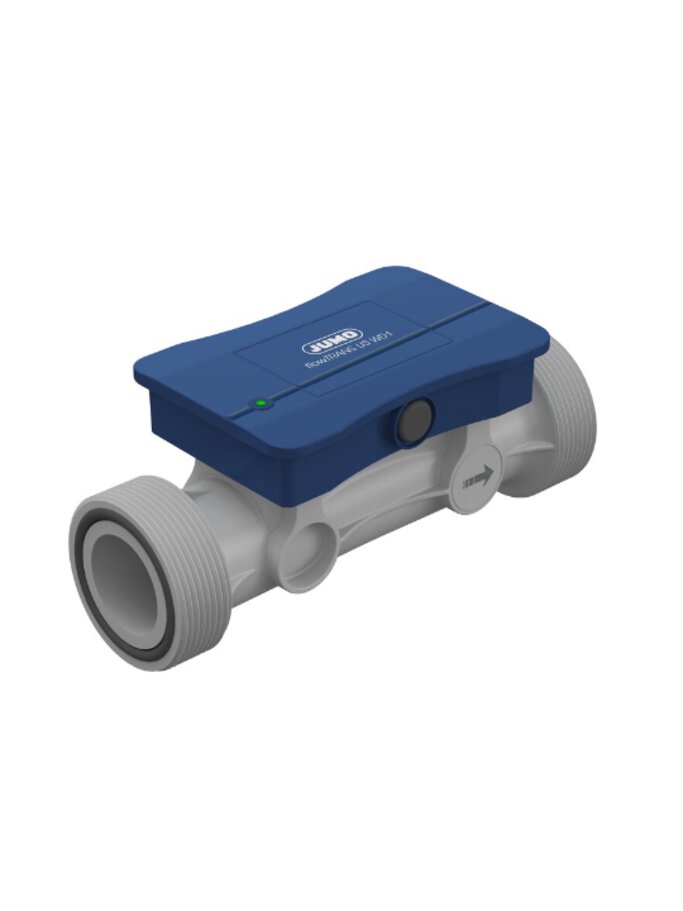
For ultrasonic flowmeters such as the JUMO flowTRANS US, we are talking about a volumetric measurement method
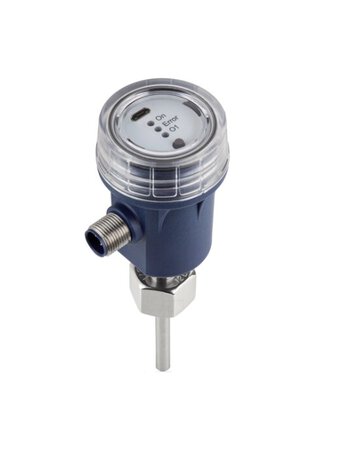
JUMO PINOS L02 calorimetric flow meter
The most common mistakes when choosing a flow meter
Before we get to the questions you need to ask yourself before buying a flow meter, we will briefly discuss the most common mistakes when choosing one so that you can avoid them.
When buying a flow meter, don't put price first. If you go mainly by this feature, you may end up with a flowmeter that is either completely unsuitable for your application, does not cover the full operating range of flow rates and operating conditions, or requires a large maintenance investment that will outweigh the savings on purchase.
Another
common mistake is to be driven by popularity. Of course, it is good to know what flowmeters are most commonly used in your industry, but consider that each industrial application requires a customised approach.
9 questions you need to know the answers to before buying a flow meter (+checklist)
Before purchasing a flow meter, you should prepare answers to questions related to the application for which it will be used:
1. What is the type of medium and its properties?
It is mainly on this basis that the choice is made as to which measuring method the flow meter should be based on and which materials it can be made of. This is very important because some measurement technologies are not suitable for specific types of medium. For example, electromagnetic flowmeters can only be used with conductive fluids with a conductivity of more than 20 microSiemsns/metre.
The characteristics of the medium are important, such as:
- the type of medium
- chemical composition
- the type of medium - gas, liquid, suspension or vapour
- density and viscosity - for liquids they are given at operating temperature, for gases at 1 bar and 20°C.
- temperature
- corrosivity/acidity
- pressure
- solids content
- liquid conductivity - for electromagnetic flowmeters
- fluid flow direction - for disc flowmeters and piston flowmeters
2. What are the process characteristics?
- flow velocity
- nominal width of the pipeline - for ultrasonic flowmeters
- pressure range
3. What is the inlet andoutlet?
It must also be determined whether a low pressure drop is required, defined as the difference between inlet and outlet pressure. For mass flow control, the inlet and outlet pressures are required to select and size the most suitable control valve.
4. What accuracy of flow measurement flow is required in your application?
Accuracy expresses the closeness of the measurement results to the actual flow value and is expressed in % (e.g. +/- 1%). In general, the lower the percentage, the more accurate the measuring device.
5. What is your budget?
You need to consider not only the purchase price of the flow meter, but also, among other things, the costs of operation, installation and the service life of the flow meter.
6. Which materials are safe for the medium?
Determining which materials are safe for the medium (e.g. hygienic) will allow you to choose the right material for the construction of, among other things, connections and seals.
7. What are the legal requirements?
Think about whether the area in which you want to install the flow meter imposes requirements for special
certificates or approvals, e.g. IECex (hazardous area application) or FDA hygienic approval.
8. Where will the flow meter be placed?
When choosing a flow meter, consider where it will be installed - e.g. indoors, outdoors or in a laboratory?
9. How much space do you have to install the flow meter?
Determine whether the size of the flow meter is an important factor for you. Take into account that some flowmeters require sections of pipe of sufficient length upstream and downstream of the device. Only when these conditions are met will they provide accurate readings of the fluid flow.

Criteria for flowmeter selection
- ${title}${badge}
